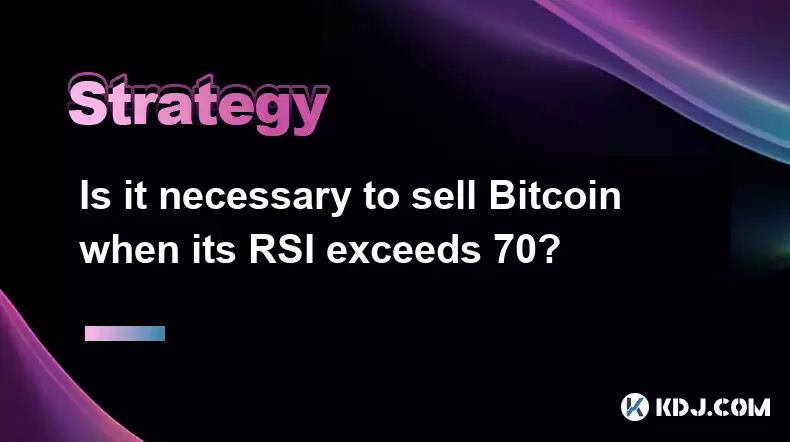-
 Bitcoin
Bitcoin $117500
2.15% -
 Ethereum
Ethereum $3911
6.19% -
 XRP
XRP $3.316
10.79% -
 Tether USDt
Tether USDt $1.000
0.01% -
 BNB
BNB $787.2
2.24% -
 Solana
Solana $175.2
4.15% -
 USDC
USDC $0.9999
0.00% -
 Dogecoin
Dogecoin $0.2225
8.40% -
 TRON
TRON $0.3383
0.28% -
 Cardano
Cardano $0.7868
6.02% -
 Stellar
Stellar $0.4382
9.34% -
 Hyperliquid
Hyperliquid $40.92
7.56% -
 Sui
Sui $3.764
7.63% -
 Chainlink
Chainlink $18.48
10.66% -
 Bitcoin Cash
Bitcoin Cash $582.1
1.88% -
 Hedera
Hedera $0.2601
6.30% -
 Avalanche
Avalanche $23.33
4.94% -
 Ethena USDe
Ethena USDe $1.001
0.02% -
 Litecoin
Litecoin $122.3
2.04% -
 UNUS SED LEO
UNUS SED LEO $8.969
-0.27% -
 Toncoin
Toncoin $3.339
0.86% -
 Shiba Inu
Shiba Inu $0.00001287
4.30% -
 Uniswap
Uniswap $10.43
7.38% -
 Polkadot
Polkadot $3.861
5.08% -
 Dai
Dai $1.000
0.02% -
 Bitget Token
Bitget Token $4.513
3.41% -
 Monero
Monero $267.7
-6.18% -
 Cronos
Cronos $0.1499
4.14% -
 Pepe
Pepe $0.00001110
5.15% -
 Aave
Aave $284.9
8.28%
Is it necessary to sell Bitcoin when its RSI exceeds 70?
Selling Bitcoin when its RSI exceeds 70 isn't necessary; consider broader market context and use RSI with other indicators for informed trading decisions.
Apr 19, 2025 at 06:56 pm

Is it necessary to sell Bitcoin when its RSI exceeds 70?
The Relative Strength Index (RSI) is a popular technical indicator used by traders to evaluate the momentum and overbought or oversold conditions of an asset. When it comes to Bitcoin, many investors wonder if they should sell their holdings when the RSI exceeds 70, indicating an overbought condition. In this article, we will delve into the intricacies of the RSI, its application in the context of Bitcoin, and whether it is necessary to sell when the RSI exceeds 70.
Understanding the RSI Indicator
The RSI is a momentum oscillator that measures the speed and change of price movements. Developed by J. Welles Wilder, the RSI oscillates between 0 and 100. Traditionally, an RSI value above 70 suggests that an asset may be overbought, while a value below 30 indicates that it may be oversold. In the context of Bitcoin, traders often use the RSI to identify potential reversal points in the market.
RSI and Bitcoin: Historical Context
Historically, Bitcoin has experienced significant volatility, making it an ideal candidate for technical analysis tools like the RSI. Bitcoin's price movements can be influenced by a variety of factors, including market sentiment, regulatory news, and macroeconomic trends. When the RSI of Bitcoin exceeds 70, it suggests that the recent price gains may be unsustainable, prompting some traders to consider selling their positions.
The Case for Selling When RSI Exceeds 70
There are several reasons why some traders might choose to sell Bitcoin when its RSI exceeds 70. One key reason is the potential for a price correction. When an asset becomes overbought, it is often followed by a period of consolidation or a price drop as the market corrects itself. By selling at this point, traders aim to lock in profits before a potential downturn.
Additionally, selling when the RSI exceeds 70 can be part of a broader trading strategy that involves taking profits at regular intervals. This approach helps traders manage risk and maintain a disciplined approach to their investments. For example, a trader might set a rule to sell a portion of their Bitcoin holdings whenever the RSI exceeds 70, regardless of other market conditions.
The Case Against Selling When RSI Exceeds 70
On the other hand, there are compelling arguments against selling Bitcoin solely based on the RSI exceeding 70. One major consideration is the potential for false signals. The RSI, like any technical indicator, is not infallible. There have been instances where Bitcoin's RSI remained above 70 for extended periods, and the price continued to rise. Selling based on the RSI alone might result in missing out on further gains.
Moreover, the broader market context should always be considered. Bitcoin's price can be influenced by a wide range of factors, including institutional adoption, technological developments, and macroeconomic trends. Relying solely on the RSI without considering these factors can lead to suboptimal trading decisions.
Using RSI as Part of a Comprehensive Strategy
Rather than using the RSI as a standalone signal to sell Bitcoin, many traders incorporate it into a more comprehensive trading strategy. One approach is to use the RSI in conjunction with other technical indicators, such as moving averages, Bollinger Bands, or the MACD (Moving Average Convergence Divergence). By combining multiple indicators, traders can gain a more nuanced understanding of market conditions and make more informed decisions.
Another strategy is to consider the timeframe over which the RSI is calculated. For example, a daily RSI might provide different insights than a weekly or monthly RSI. Traders might choose to sell only when the RSI exceeds 70 on multiple timeframes, indicating a stronger overbought condition.
Practical Example: Using RSI to Inform Trading Decisions
To illustrate how the RSI can be used in practice, let's consider a hypothetical scenario where a trader is monitoring Bitcoin's RSI on a daily chart. Here are the steps they might follow:
- Monitor the RSI: The trader observes that Bitcoin's RSI has been steadily climbing and has now exceeded 70.
- Assess other indicators: The trader checks other technical indicators, such as the 50-day and 200-day moving averages, to see if they corroborate the RSI's overbought signal.
- Evaluate market context: The trader reviews recent news and market trends to understand if there are any external factors that might be driving Bitcoin's price.
- Make a decision: If the other indicators and market context suggest a potential correction, the trader might decide to sell a portion of their Bitcoin holdings. However, if the broader market context indicates continued bullish momentum, the trader might choose to hold onto their position.
The Importance of Risk Management
Regardless of whether a trader decides to sell Bitcoin when its RSI exceeds 70, effective risk management is crucial. This includes setting stop-loss orders to limit potential losses, diversifying their portfolio to spread risk, and regularly reviewing and adjusting their trading strategy based on market conditions.
Traders should also be aware of their own risk tolerance and investment goals. For some, selling when the RSI exceeds 70 might align well with their strategy, while others might prefer to hold onto their Bitcoin for the long term, regardless of short-term fluctuations in the RSI.
Conclusion
In conclusion, whether it is necessary to sell Bitcoin when its RSI exceeds 70 depends on a variety of factors, including the trader's overall strategy, risk tolerance, and the broader market context. While the RSI can be a useful tool for identifying potential overbought conditions, it should not be the sole basis for trading decisions. By incorporating the RSI into a comprehensive trading strategy and maintaining a focus on risk management, traders can make more informed decisions about when to buy or sell Bitcoin.
Frequently Asked Questions
Q: Can the RSI be used to predict Bitcoin's long-term price movements?
A: The RSI is primarily a short-term momentum indicator and is not designed to predict long-term price movements. While it can help identify overbought or oversold conditions that might lead to short-term corrections, it is less effective for forecasting long-term trends. Traders interested in long-term price movements should consider other factors such as fundamental analysis, market sentiment, and broader economic trends.
Q: How often should I check Bitcoin's RSI?
A: The frequency with which you check Bitcoin's RSI depends on your trading style and strategy. Day traders might monitor the RSI on an hourly or even minute-by-minute basis, while swing traders might check it daily or weekly. It's important to align the frequency of your RSI checks with your overall trading strategy and time horizon.
Q: Are there other technical indicators that work well with the RSI for Bitcoin trading?
A: Yes, several technical indicators can complement the RSI when trading Bitcoin. Some popular choices include moving averages, which help identify trends; Bollinger Bands, which indicate volatility; and the MACD, which can confirm momentum changes. By using these indicators in conjunction with the RSI, traders can gain a more comprehensive view of market conditions.
Q: How can I avoid false signals when using the RSI to trade Bitcoin?
A: To avoid false signals, it's important to use the RSI in conjunction with other technical indicators and to consider the broader market context. Additionally, traders can use different timeframes to confirm signals. For example, if the RSI indicates an overbought condition on a daily chart, checking the RSI on a weekly chart can help confirm whether the signal is valid. Regularly reviewing and adjusting your trading strategy based on market conditions can also help mitigate the impact of false signals.
Disclaimer:info@kdj.com
The information provided is not trading advice. kdj.com does not assume any responsibility for any investments made based on the information provided in this article. Cryptocurrencies are highly volatile and it is highly recommended that you invest with caution after thorough research!
If you believe that the content used on this website infringes your copyright, please contact us immediately (info@kdj.com) and we will delete it promptly.
- Tron's Sell-Off Spurs Altcoin Shift: What's Next for TRX?
- 2025-08-08 08:30:12
- Sleep Token's US Takeover: Thornhill Rides the 'Even In Arcadia' Wave
- 2025-08-08 08:30:12
- FTT Token's Wild Ride: Creditor Repayments vs. Market Drop - A New Yorker's Take
- 2025-08-08 07:10:12
- Floki Crypto Price Prediction: Riding the Robinhood Rocket or Just a Meme?
- 2025-08-08 07:15:12
- EigenLayer, Restaking, and Ethereum: Navigating the Hype and the Hazards
- 2025-08-08 06:30:12
- Super Bowl 59: Jon Batiste to Jazz Up the National Anthem
- 2025-08-08 06:30:12
Related knowledge

How to avoid common crypto investment mistakes?
Jul 13,2025 at 01:35am
Understanding the Risks of Crypto InvestmentInvesting in cryptocurrency can be highly rewarding, but it also comes with significant risks. One of the ...

What is a long-short crypto strategy?
Jul 15,2025 at 10:56am
Understanding the Basics of a Long-Short Crypto StrategyA long-short crypto strategy is an investment approach where traders simultaneously take long ...

What is a long-short crypto strategy?
Jul 11,2025 at 01:28pm
Understanding the Basics of Long-Short Crypto StrategyA long-short crypto strategy is an investment approach where traders take both long and short po...

How to use the RSI indicator for crypto?
Jul 12,2025 at 03:56pm
Understanding the RSI Indicator in Cryptocurrency TradingThe Relative Strength Index (RSI) is a momentum oscillator used to measure the speed and chan...

Is copy trading a good strategy for crypto beginners?
Jul 12,2025 at 08:28am
Understanding Copy Trading in the Cryptocurrency MarketCopy trading is a strategy where novice traders replicate the trades of experienced investors a...

How to build a crypto portfolio with $1000?
Jul 13,2025 at 08:14pm
Understanding the Basics of Cryptocurrency InvestmentBuilding a crypto portfolio with $1000 starts with understanding the fundamentals of cryptocurren...

How to avoid common crypto investment mistakes?
Jul 13,2025 at 01:35am
Understanding the Risks of Crypto InvestmentInvesting in cryptocurrency can be highly rewarding, but it also comes with significant risks. One of the ...

What is a long-short crypto strategy?
Jul 15,2025 at 10:56am
Understanding the Basics of a Long-Short Crypto StrategyA long-short crypto strategy is an investment approach where traders simultaneously take long ...

What is a long-short crypto strategy?
Jul 11,2025 at 01:28pm
Understanding the Basics of Long-Short Crypto StrategyA long-short crypto strategy is an investment approach where traders take both long and short po...

How to use the RSI indicator for crypto?
Jul 12,2025 at 03:56pm
Understanding the RSI Indicator in Cryptocurrency TradingThe Relative Strength Index (RSI) is a momentum oscillator used to measure the speed and chan...

Is copy trading a good strategy for crypto beginners?
Jul 12,2025 at 08:28am
Understanding Copy Trading in the Cryptocurrency MarketCopy trading is a strategy where novice traders replicate the trades of experienced investors a...

How to build a crypto portfolio with $1000?
Jul 13,2025 at 08:14pm
Understanding the Basics of Cryptocurrency InvestmentBuilding a crypto portfolio with $1000 starts with understanding the fundamentals of cryptocurren...
See all articles

























































































